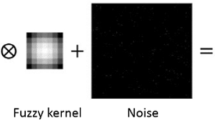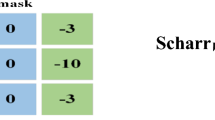Abstract
One of the most difficult challenges in image processing is restoring a defocused image by reducing blur and noise. Blurring characterizes image deterioration, and recovery is accomplished by point spread function estimation and ideal image estimation processing was repeated. Ringing, or wavelike artifacts that arise along strong edges, is a difficult challenge in latent image restoration. Therefore, this paper will introduce an improved blind deconvolution for restoring blurry images using ringing removal process. This paper provides an improved deconvolution technique that uses blur kernel prediction based on dark channels before achieving clear image recovery. To hold picture information and beautify the rims of the ringing impact created at some point of the authentic clean picture recuperation process, an easy bilateral clear out is used. The ringing removal method L0 regularization is used with the restoration process, which can estimate a sharper image. By removing the difference map from the final deconvolution result, it is possible to get a clearer picture without ringing. Finally, the results are presented in terms of performance parameters such as signal-to-noise ratio (SNR), mean squared error (MSE), and peak signal-to-noise ratio (PSNR).The results show that the performance parameters of the improved blind deconvolution model are superior compared to existing image blur removal algorithms.
Access this chapter
Tax calculation will be finalised at checkout
Purchases are for personal use only
Similar content being viewed by others
References
Cheng L, Wei H (2020) An image deblurring method based on improved dark channel prior. J Phys: Conf Ser 1627(1):012017
Xu X, Zheng H, Zhang F, Li H, Zhang M (2020) Poisson image restoration via transformed network. Journal of Shanghai Jiaotong University (Science) 1–12
Kanwal N, Pérez-Bueno F, Schmidt A, Molina R, Engan K (2022) The devil is in the details: whole slide image acquisition and processing for artifacts detection, color variation, and data augmentation. A review. IEEE Access
Shamshad F, Ahmed A (2020) Class-specific blind deconvolutional phase retrieval under a generative prior. arXiv preprint arXiv:2002.12578
Barani S, Poornapushpakala S, Subramoniam M, Vijayashree T, Sudheera K (2022) Analysis on image restoration of ancient paintings. In: 2022 international conference on advances in computing, communication and applied informatics (ACCAI). IEEE, pp 1–8
Sarbas CHS, Rahiman VA (2019) Deblurring of low light images using light-streak and dark channel. In: 2019 4th international conference on electrical, electronics, communication, computer technologies and optimization techniques (ICEECCOT). IEEE, pp 111–117
Wang H, Pan J, Su Z, Lianga S (2017) Blind image deblurring using elastic-net based rank priors. In: Computer vision and image understanding, Elsevier, pp 157–171
Yang F-W, Lin HJ, H Chuang HJ (2017) Image deblurring, IEEE smart world, ubiquitous intelligence and computing, advanced and trusted computed, scalable computing and communications, cloud and big data computing, internet of people and smart city innovation
Marapareddy R (2017) Restoration of blurred images using wiener filtering. International Journal of Electrical, Electronics and Data Communication
Liu Y, Wang J, Cho S, Finkelstein A, Rusinkiewicz S (2013) A no-reference metric for evaluating the quality of motion deblurring. ACM Transactions on Graphics (SIGGRAPH Asia)
Author information
Authors and Affiliations
Corresponding author
Editor information
Editors and Affiliations
Rights and permissions
Copyright information
© 2023 The Author(s), under exclusive license to Springer Nature Singapore Pte Ltd.
About this paper
Cite this paper
Dimlo, U.M.F. et al. (2023). An Improved Blind Deconvolution for Restoration of Blurred Images Using Ringing Removal Processing. In: Reddy, K.A., Devi, B.R., George, B., Raju, K.S., Sellathurai, M. (eds) Proceedings of Fourth International Conference on Computer and Communication Technologies. Lecture Notes in Networks and Systems, vol 606. Springer, Singapore. https://doi.org/10.1007/978-981-19-8563-8_34
Download citation
DOI: https://doi.org/10.1007/978-981-19-8563-8_34
Published:
Publisher Name: Springer, Singapore
Print ISBN: 978-981-19-8562-1
Online ISBN: 978-981-19-8563-8
eBook Packages: Intelligent Technologies and RoboticsIntelligent Technologies and Robotics (R0)




